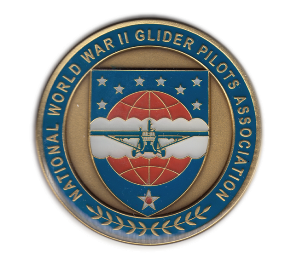National WWII Glider Pilots AssociationLegacy Organization of veterans National WWII Glider Pilots Association. Discover our History, Preserve our Legacy | ||
|
One of the questions answered in the reports given by the Glider Pilots when they return from the Landing Zone after a combat mission is the type of landing they made. The Approach patter in degrees: | |
|
There are two important reasons why you follow an exact approach pattern: First, you develop precision habits which are invaluable under the distracting conditions of combat. Second, when a number of gliders are landing in a given area almost simultaneously, they must all follow the same flight path. Any deviation from the standard plan of approach causes confusion and accidents. All standard approach patterns incorporate a base leg. Use it to make any final adjustments in altitude. The bas leg gives you an unobstructed view of the landing area, enabling you to identify your dispersal spot so that you can make your final turn directly in line with it. The approach patterns, as illustrated, outline the path over the ground which you must follow. In any but no-wind conditions you must crab on one or more of the headings to make good the desired course. To avoid confusion in the traffic pattern, try to follow in trail of the gliders ahead of yours. However, when it appears that by following the others you will be unable to landing the proper spot, do whatever is necessary to put your glider into a more favorable position. Because your judgment can’t be perfect, plan your base leg close enough to the landing area to avoid the possibility of undershooting. With the proper use of spoilers and slips or tail parachute, you can dissipate a great amount of excess altitude. Remember, in gliders, altitude is money in the bank. While following in trail, lead your turns by the radius of turn your glider requires Don not make the common mistake of starting our turn after you have reached a point opposite the preceding gliders on their new leg. |
     |
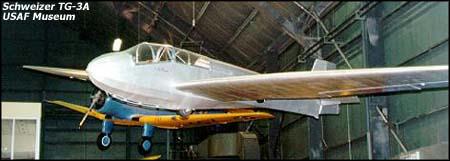
Schweizer TG-3
A TG-3 is on display in the US Air Force Museum
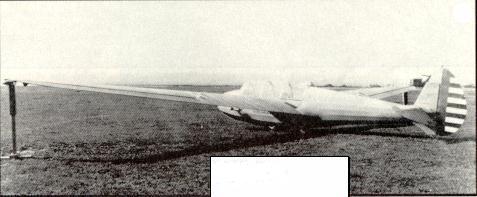 Laister-Kauffman TG-4
Laister-Kauffman TG-4A TG-4 is on display in the Silent Wing Museum in Lubbock, Texas.
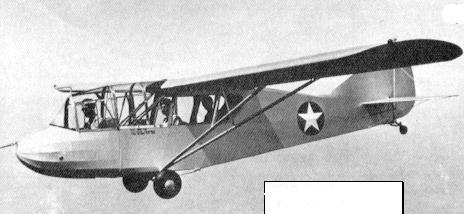 Aeronca TG-5
Aeronca TG-5USAAF photo courtesy US Air Force Museum
A completely restored TG-6 is on display in the Pima Air Museum, Tucson, AZ.
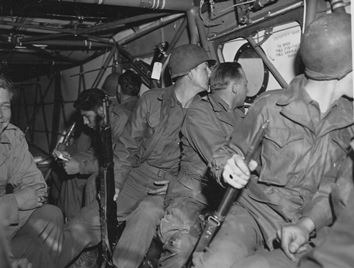 Courtesy of the National Archives / NWWIIGPA Collection
Courtesy of the National Archives / NWWIIGPA CollectionTraining was always on going even after they earned their wings. When not in combat pilots practiced landing with troops and equipment. Back Caption: Credit...U S Army Signal Corps/Photog...T/4 Jack Clemmer (3264)
Troopers of the 82nd Airborne division making a practice flight in a glider over france peer out of portholes at the ground far below, except for one nonchalant soldier who takes advanage of the inactivity to catch up on his reading. Laon, France 15 March [1945].

